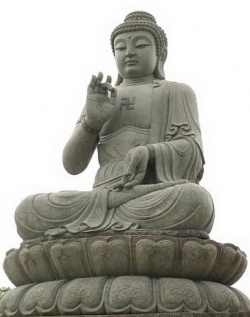Difference between revisions of "Ta-hsing-shan-ssu temple"
(Created page with "thumb|250px| <poem> '''Ta-hsing-shan-ssu temple''' [大興善寺] (PY Daxingshansi; Jpn Daikozen-ji) Also known as Hsing-shan-ssu temple. A temple built...") |
|||
| (2 intermediate revisions by one other user not shown) | |||
| Line 1: | Line 1: | ||
[[File:Sb71.jpg|thumb|250px|]] | [[File:Sb71.jpg|thumb|250px|]] | ||
<poem> | <poem> | ||
| − | '''Ta-hsing-shan-ssu temple''' | + | '''[[Ta-hsing-shan-ssu]] [[temple]]''' |
[大興善寺] (PY Daxingshansi; Jpn Daikozen-ji) | [大興善寺] (PY Daxingshansi; Jpn Daikozen-ji) | ||
| − | Also known as Hsing-shan-ssu temple. A temple built in Ch'ang-an in 582 by Emperor Wen, the founder of the Sui dynasty and a restorer of Buddhism, to serve as the center of Buddhism in China. During the reign of Emperor Wen, Indian | + | Also known as [[Hsing-shan-ssu]] [[temple]]. A [[temple]] built in [[Ch'ang-an]] in 582 by [[Emperor]] Wen, the founder of the Sui dynasty and a restorer of [[Buddhism]], to serve as the center of [[Buddhism in China]]. During the reign of [[Emperor]] Wen, [[Indian]] [[Monks]] such as Narendrayashas and [[Jnanagupta]] engaged in the translation of [[Buddhist]] [[scriptures]] into {{Wiki|Chinese}} at this [[temple]], and many other eminent priests visited or lived there. It was the largest [[temple]] in [[China]] during the Sui and T'ang dynasties. During the reign of Hsüan-tsung (r. 712-756), the eighth [[emperor]] of the T'ang dynasty, [[Pu-k'ung]] (Skt [[Amoghavajra]]), who had brought [[Esoteric Buddhism]] from [[India]] to [[China]], resided at this [[temple]], and thereafter it prospered as a center of [[Esoteric Buddhism]]. In the ninth century, [[Jikaku]] and [[Chisho]], later respectively the third and fifth chief priests of the [[Japanese]] [[Tendai school]], went to [[China]] and studied [[Esoteric Buddhism]] at [[Ta-hsing-shan-ssu]] [[temple]]. |
</poem> | </poem> | ||
{{R}} | {{R}} | ||
Latest revision as of 13:20, 17 September 2013
Ta-hsing-shan-ssu temple
[大興善寺] (PY Daxingshansi; Jpn Daikozen-ji)
Also known as Hsing-shan-ssu temple. A temple built in Ch'ang-an in 582 by Emperor Wen, the founder of the Sui dynasty and a restorer of Buddhism, to serve as the center of Buddhism in China. During the reign of Emperor Wen, Indian Monks such as Narendrayashas and Jnanagupta engaged in the translation of Buddhist scriptures into Chinese at this temple, and many other eminent priests visited or lived there. It was the largest temple in China during the Sui and T'ang dynasties. During the reign of Hsüan-tsung (r. 712-756), the eighth emperor of the T'ang dynasty, Pu-k'ung (Skt Amoghavajra), who had brought Esoteric Buddhism from India to China, resided at this temple, and thereafter it prospered as a center of Esoteric Buddhism. In the ninth century, Jikaku and Chisho, later respectively the third and fifth chief priests of the Japanese Tendai school, went to China and studied Esoteric Buddhism at Ta-hsing-shan-ssu temple.
